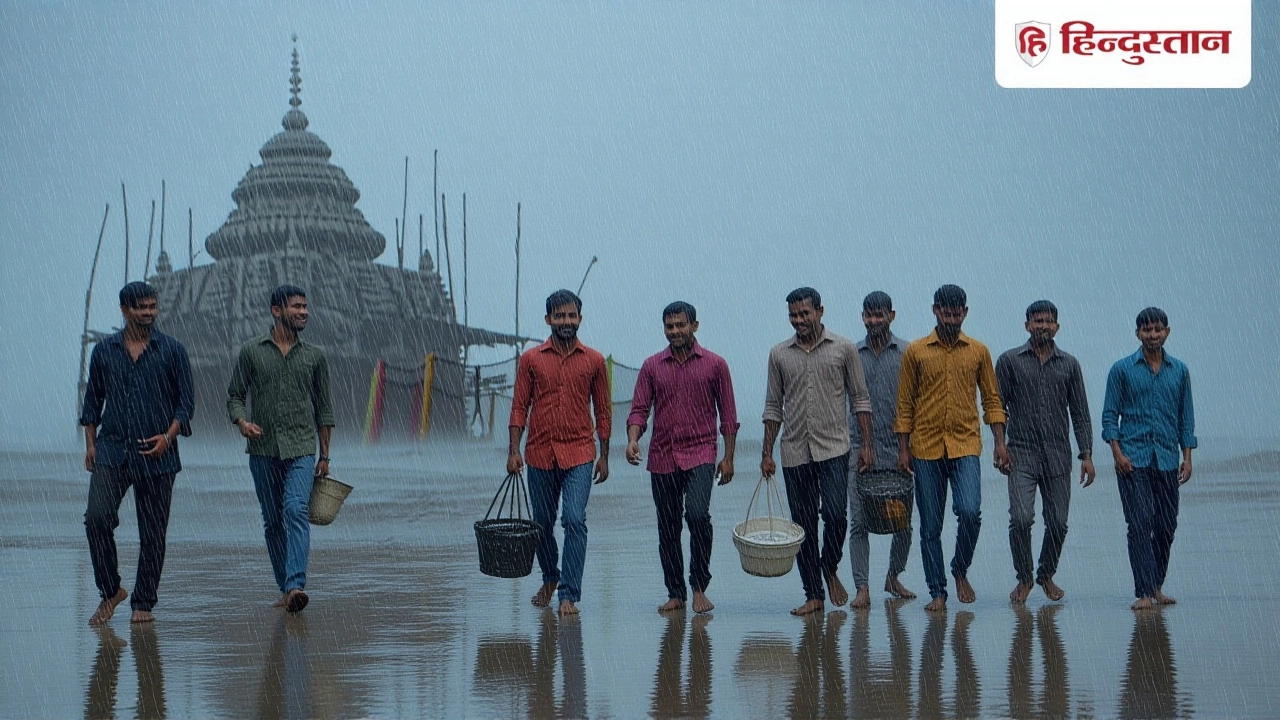When India Meteorological Department issued an orange weather alert on October 6, 2025, residents of Himachal Pradesh woke to the season’s first snowfall on the Dhauladhar ranges. Overnight rain drummed across Kangra and Chamba districts, temperatures dipped by a few degrees, and thunderstorms crackled from Shimla to Kufri. The sudden chill marks the state’s swift shift from monsoon to early winter, a transition driven by a powerful Western Disturbance.
Background: Western Disturbance and Seasonal Shift
According to a forecast dated October 2, 2025, a fresh Western DisturbanceNorthwest India began feeding moisture from the Arabian Sea and Bay of Bengal into the Himalayas. The system, sitting at lower tropospheric levels, was expected to intensify between October 5 and 7, with the peak on October 6. Historically, such disturbances bring heavy precipitation, hail, and gusty winds to the sub‑Himalayan belt.
This time, the disturbance collided with the steep slopes of the Dhauladhar and the high passes of Lahaul and Spiti, creating a perfect recipe for early snowfall and intense thunderstorms.
Details of the First Snowfall and Rainfall
At around 02:00 hrs local time, the Season's First SnowfallHimachal Pradesh blanketed the Dhauladhar peaks. Snow depth was light—just a few centimeters—but the visual impact was striking against the orange‑brown autumn foliage.
Simultaneously, isolated rain showers hammered Kangra and Chamba, pushing night‑time temperatures down. In Tabo, the mercury sank to a chilly 3.1 °C, the lowest reading across the state that morning. Nearby Keylong recorded 3.6 °C, while Kalpa and Kukumseri hovered around 6.2 °C. Even at lower elevations, places like Kufri and Narkanda lingered at 10 °C, a noticeable bite for locals accustomed to milder autumn evenings.
Thunderstorms lit up the sky over multiple locations—Shimla, Kufri, Jot, Murari Devi, Sundernagar, Bhunter, and more. Gusts swirled between 30 and 61 km/h, with Reckong Peo, Tabo, Bilaspur, Hamirpur, and Kukumseri feeling the brunt.
Impact Across Districts
The orange alert covered six districts: Chamba, Kangra, Kullu, Mandi, Sirmaur, and the remote Lahaul and Spiti. Here’s what happened in each:
- Chamba: Overnight downpours caused minor landslides on the Giri‑Gir road, temporarily halting bus services.
- Kangra: Heavy rain triggered flash‑flood warnings in the valleys of Kangra River; several schools closed for the day.
- Kullu: Snow on higher trails delayed trekking groups heading to Roerich Estate.
- Mandi: Gusty winds uprooted a few power lines, leaving pockets of the town without electricity for a couple of hours.
- Sirmaur: Hailstones the size of marbles dented rooftops in Nahan, prompting repair works.
- Lahaul and Spiti: The high‑altitude district saw its first snowfall of the season, covering the Spiti River banks with a thin white veil.
Local authorities deployed additional patrols, and the Indian Army’s High‑Altitude Rescue Teams were placed on standby, especially around the Leh‑Manali highway.
Expert and Local Reactions
Dr. Neha Sharma, a senior climatologist at the Indian Institute of Tropical Meteorology, said, “The strength of this Western Disturbance is unusual for early October. The moisture influx from both coasts amplified the precipitation, turning a standard rain event into a multi‑hazard scenario with hail and snow.” She added that such early snow can benefit the upcoming winter water reservoirs but warned of increased avalanche risk in the higher passes.
On the ground, shopkeepers in Shimla reported a sudden surge in sales of warm clothing and hot beverages. “We never see snow this early,” said Ramesh Kumar, owner of a souvenir stall near Mall Road. “Customers are buying woolen shawls and tea like never before.” Residents in Tabo, meanwhile, reclined on their verandas, marveling at the crisp air. “It feels like a preview of December,” one elderly farmer told me, “but the thunder was a surprise.”

What This Means for Travelers and Residents
For tourists planning to trek or explore the hill stations, the message is clear: pack rain‑gear, sturdy boots, and layers of warm clothing. The state’s tourism board issued a reminder that the mountain roads, especially the Manali‑Leh stretch, may become slippery after rain‑induced landslides. Local bus services have already adjusted schedules in Kangra and Chamba.
Farmers are eyeing the moisture as a boon for upcoming sowing cycles, yet they also brace for possible crop damage from hail. The Department of Agriculture in Mandi released a short advisory on crop protection measures, urging the use of anti‑hail nets for vulnerable orchards.
Looking Ahead: Forecasts for Late October
Weather models suggest that after the October 6 peak, the Western Disturbance will gradually weaken, but the state can expect 8‑15 rainy days throughout the month. Temperature ranges will be stark: highs of 32 °C in lower valleys like Palampur, while peaks such as Kalpa may dip to 0 °C at night. The forecast for Palampur predicts an average of 17.2 °C, with a maximum of 22.3 °C and a minimum of 12.1 °C. Dharamshāla’s October outlook shows pleasant post‑monsoon weather, averaging 12.4‑21.2 °C and about 24 mm of rain.
In short, October 2025 is shaping up to be a transitional roller‑coaster—early snow, scattered thunderstorms, and a steady drizzle that will keep both locals and visitors on their toes.
Frequently Asked Questions
How will the early snowfall affect travel on mountain roads?
Roads at higher elevations, especially around Lahaul and Spiti and the Manali‑Leh stretch, may become slippery after rain‑mixed snow. Authorities advise using winter‑grade tires, allowing extra travel time, and checking local bulletins before setting out.
What caused the orange weather alert for Himachal Pradesh?
The alert was triggered by a strong Western Disturbance that brought heavy to very heavy rain, hail, thunderstorms, lightning, and gusty winds of 40‑50 km/h to six districts. The system’s moisture source spanned both the Arabian Sea and Bay of Bengal, creating a high‑risk scenario.
Which districts experienced the most severe impacts?
Chamba and Kangra saw the heaviest rain and flash‑flood warnings, while Lahaul and Spiti recorded the first snowfall. Kullu faced trail closures, and Sirmaur reported hail damage to rooftops. Overall, all six alerted districts felt a mix of rain, wind, and temperature drops.
What should tourists pack for a trip to Himachal in October?
Pack layered clothing, a waterproof jacket, sturdy trekking boots, rain‑covers for backpacks, and warm accessories like gloves and scarves. Carry a portable charger for power outages and keep an eye on local weather alerts for sudden thunderstorms.
When is the next expected peak of the Western Disturbance?
Meteorologists anticipate the disturbance’s influence will wane after October 6, with the next significant pulse likely in the last week of October, bringing scattered showers rather than the intense storm seen earlier.
